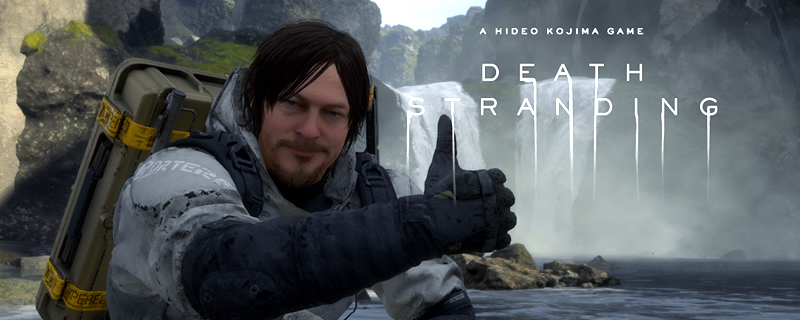Death Stranding PC Performance Review and Optimisation Guide
Conclusion – A great PC port, but improvements could be made
At its core, Death Stranding was a game that was designed within the constraints of Sony’s Playstation 4 platform, something which somewhat limits the game’s PC version. That said, it is these constraints that give Death Stranding some of its strengths on PC, resulting in a PC version that runs incredibly well across a wide range of hardware configurations.Â
When it comes to graphical settings, the PC version of Death Stranding is fairly inflexible. Graphically, all PC gamers can do is change draw distances, reduce the resolution of shadow maps, limit the resolution of textures and disable features like Depth of Field, Screen Space Reflections and Screen Space Ambient Occlusion. All of these settings were designed to use Sony’s PlayStation 4 hardware efficiently. That efficiency also translates to the game’s PC version, creating little performance difference between Death Stranding’s highest and lowest graphical settings.Â
The advantage of Death Stranding’s limited PC graphics options is the fact that the game looks great when using its highest and lowest graphical settings. While PC’s max settings will extend the game’s draw distances to levels beyond what the game’s PlayStation version offered, Death Stranding’s lowest preset can still provide incredible visuals. There is no shame in running Death Stranding at low settings, but there is also not much of a performance advantage to it either.Â
If you want more performance from Death Stranding’s PC version, you will need to lower the game’s resolution. Alternatively, you can enable DLSS (if you use an Nvidia RTX graphics card) or utilise AMD’s FidelityFX Contrast Adaptive Sharpening (for Radeon and non-RTX Geforce users). Thankfully, the game runs well on most modern hardware configurations, with GPUs like Nvidia’s GTX 1060 and AMD’s RX 580 running at 1080p at 60 FPS framerates in most scenarios using the game’s highest settings.Â
What we would love to see with Death Stranding is more robust resolution scaling options. This addition would allow players to run Death Stranding at odd resolutions like 1944p (a 90% scaling of 4K) or 1728p (an 80% scaling of 4K). This flexibility would allow PC gamers to achieve a solid 60 FPS framerates at an almost 4K resolution on GPUs like AMD’s RX 5700XT. Other games have robust FidelityFX CAS configurations in their PC versions, and this kind of option would have been a great addition to Death Stranding as well.Â
For Nvidia’s RTX DLSS is a feature which will enable 4K 60 FPS performance on your system. When set to quality mode, this setting will also improve the game’s visuals in many situations. For Nvidia users, DLSS is a killer feature, and it highlights the potential of AI within the PC gaming market and the important of upscaling within future PC and console games. As we reach for higher and higher resolutions, faking it will be more cost-effective than rendering it natively, and you can bet that developers and hardware manufacturers will exploit that. In this regard, DLSS is a look into the future of both console and PC gaming. Further thoughts on Death Strandings use of DLSS can be found here, where we have analysed the feature in more depth.Â
CPU-wise, Death Stranding will run at 60 FPS framerates on any system which meets the game’s minimum system requirements. If you have four strong CPU cores, Death Stranding will run well on your PC, assuming you have the GPU power to back it up. High refresh rate gamers will be glad to know that the Decima Engine scales well to higher cores/thread counts, seeing major benefits when moving to six and eight-core setups. Playing Death Stranding at 100 FPS is relatively easy when you are using a modern processor.Â
Â
One thing that’s worth noting is that Death Stranding, and perhaps the Decima Engine as a whole loves AMD’s RDNA architecture. The performance advantage that we found when moving from AMD’s RX Vega 56 to AMD’s RX 5700 was incredible, and it highlights the fact that AMD was listening to its console partners when creating its RDNA architecture. This should leave gamers excited for AMD’s next-generation console chips; and by extension their RDNA 2 PC graphics architecture. If console makers can get so much from the PlayStation 4, can you imagine what would be possible with a graphics architecture that has been built on the recommendations of the world’s best game developers? Â
With Death Stranding running so well on PC, it is likely that Guerilla Games’ Horizon: Zero Dawn will also run well on PC when it releases next month. Hopefully, we will continue to see more Decima engine titles on PC moving forward, be it from Kojima Productions of Guerilla Games. While Horizon 2: Forbidden West has been revealed as a PlayStation 5 exclusive, the game may receive a PC port eventually, especially if its predecessors proves to be successful when it releases on PC next month.Â
Death Stranding’s PC version is a solid release from Kojima Productions, and its downsides are minor that they are barely worth complaining about. Cutscenes are limited to 60 FPS, but is that really a downside? The game’s graphical option could be better, but is that really a problem? As it stands, Death Stranding’s PC version is the definitive version of Kojima’s latest game, and that is a great thing.Â
You can join the discussion on our Death Stranding PC Performance Review and Optimisation Guide on the OC3D Forums. Â



